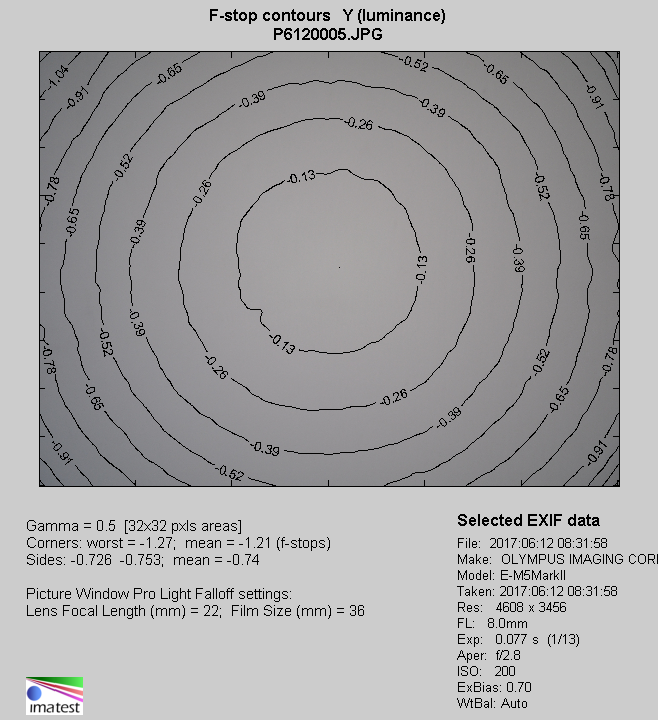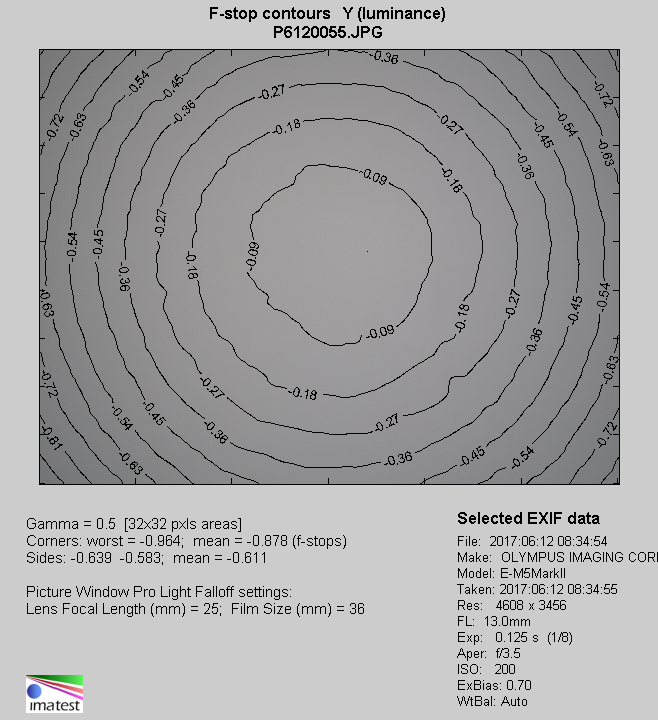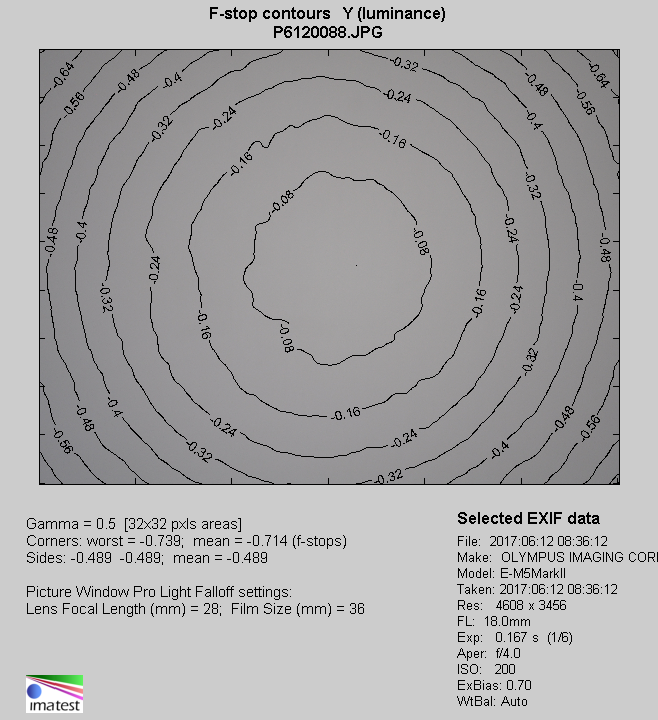Panasonic Leica DG Vario-Elmarit 8-18 mm f/2.8-4 ASPH.
8. Vignetting
| E-M5 II, JPEG, 8 mm, f/2.8 | E-M5 II, JPEG, 8 mm, f/4.0 |

|

|
| E-M5 II, JPEG, 13 mm, f/3.5 | E-M5 II, JPEG, 13 mm, f/4.0 |

|

|
| E-M5 II, JPEG, 18 mm, f/4.0 | E-M5 II, JPEG, 18 mm, f/5.6 |

|

|
In the case of a difficult combination of the 8 mm focal length and the f/2.8 aperture you have to take into account a loss of light in the corners of 34% (−1.21 EV). That value is only seemingly high. Many lenses dedicated for bigger sensors, being slower than the Panaleica tested by us, have had vignetting of 50-70%. Compared to that the tested lens fares really well.
Please Support UsIf you enjoy our reviews and articles, and you want us to continue our work please, support our website by donating through PayPal. The funds are going to be used for paying our editorial team, renting servers, and equipping our testing studio; only that way we will be able to continue providing you interesting content for free. |
- - - - - - - - - - - - - - - - - - - - - - - - - - - - - - - - - - - - - - - - - - - - - - - -
On stopping down the aperture to f/4.0 the vignetting decreases to a not especially bothersome level of 18% (−0.56 EV), and on further stopping down it gets even lower, to 16% (−0.50 EV); after that the aberration doesn’t react to stopping down at all.
In the middle of the focal range the problems are even fewer. By f/3.5 you deal with a brightness loss reaching 26% (−0.88 EV), which decreases to 17% (−0.53 EV) on stopping down the aperture to f/4.0. By f/5.6 the vignetting amounts to 14% (−0.42 EV) and, like in the previous case, further stopping down doesn’t bring any measurable effects.
At the maximum focal length you see the lowest results. By f/4.0 the vignetting is 22% (−0.71 EV), and by f/5.6 it decreases to 13% (−0.42 EV); by f/8.0 and f/11.0 its values are similar.
At 13 and 18 mm we didn’t notice any significant differences between RAW and JPEG files. The results we got differed by 1-2% at the maximum so they remained, within the margin of error, the same.
More differences you can spot at the 8 mm focal length; they stem mainly from cropping JPEG images, a procedure performed after distortion correction. At that place the vignetting is 40% (−1.47 EV) so by 6% higher than on JPEG files; by f/4.0 it decreases to 27% (−0.91 EV).
To sum up, this category shows very well how a small sensor can be used for fighting vignetting. It would be difficult to find any other ultra wide-angle lens with a similar aperture fastness which would correct this aberration as well as the Panaleica, tested here.
| Olympus O-MD E-M5 Mark II, JPEG, 8 mm, f/2.8 |
 |
| Olympus O-MD E-M5 Mark II, JPEG, 13 mm, f/3.5 |
 |
| Olympus O-MD E-M5 Mark II, JPEG, 18 mm, f/4.0 |
 |






